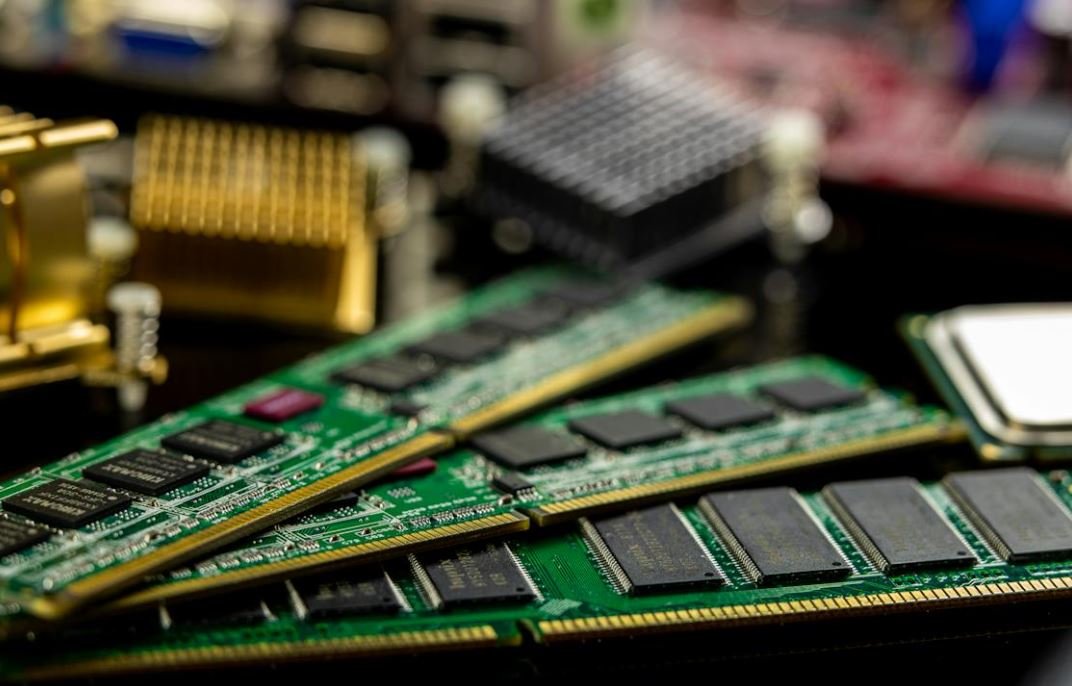Neuralink Is Going to Fail
Neuralink, a company founded by Elon Musk, aims to merge human brains with artificial intelligence by developing a brain-computer interface. While the ambitious goal has caught the attention of many, there are several reasons why Neuralink is likely to fail in achieving its objectives.
Key Takeaways
- Neuralink’s goal of merging human brains with artificial intelligence is highly ambitious.
- The technology required to achieve Neuralink’s objectives is still in its early stages of development.
- There are significant ethical concerns surrounding brain-computer interfaces.
- Existing regulations and safety standards may pose obstacles for Neuralink’s progress.
One of the main reasons why Neuralink is likely to fail is the sheer complexity of merging human brains with artificial intelligence. Despite remarkable advances in neuroscience and AI, the process of seamlessly integrating the two remains a significant challenge. *The intricate nature of the human brain makes it difficult to fully comprehend and replicate its functions in an artificial system.*
Furthermore, the technology required for Neuralink’s vision is still in its early stages of development. While some progress has been made in brain-computer interfaces, the technology is far from being sophisticated enough to achieve the level of integration envisioned by Neuralink. *Scientists and engineers are continuously working to improve brain-computer interfaces, but it will take considerable time and effort to reach the necessary level of precision and reliability.*
Regulations and Ethical Concerns
Aside from technical challenges, Neuralink also faces a number of regulatory and ethical hurdles. The development and use of brain-computer interfaces raise serious ethical questions regarding privacy, consent, and potential misuse of the technology. *Society must carefully navigate these concerns and establish comprehensive frameworks to ensure the responsible development and deployment of brain-computer interfaces.*
In addition, existing regulatory frameworks and safety standards may pose significant obstacles for Neuralink. The process of gaining regulatory approval for new medical technologies can be lengthy and complex. It requires extensive testing, evaluation, and adherence to established protocols. *Neuralink will have to navigate these regulatory processes effectively to bring their product to market.*
The Future of Neuralink
While the challenges are significant, it is important to appreciate the potential benefits that Neuralink’s technology could bring if successful. Improved brain-computer interfaces have the potential to revolutionize healthcare and provide new solutions for individuals with neurological disorders. However, the road to achieving this vision is long and uncertain.
**Table 1**: Comparative analysis of current brain-computer interfaces:
| BCI | Advantages | Disadvantages |
|---|---|---|
| Invasive | – Higher data transmission rates – More precise control |
– Surgical implantation – Higher risk of complications |
| Non-Invasive | – No surgical procedures – Lower risk of complications |
– Lower data transmission rates – Limited control precision |
**Table 2**: Major ethical concerns in brain-computer interfaces:
| Concern | Description |
|---|---|
| Privacy | Potential breach of private thoughts and intimate information. |
| Consent | Ensuring individuals have full agency and control over their brain data. |
| Misuse | Possible use of brain-computer interfaces for unauthorized control or manipulation. |
**Table 3**: Regulatory challenges faced by Neuralink:
| Challenge | Description |
|---|---|
| Approval Process | Complying with regulatory requirements for medical devices. |
| Safety Evaluation | Ensuring the technology meets appropriate safety standards. |
| Ethical Review | Addressing ethical concerns through comprehensive review processes. |
While Neuralink’s mission is undoubtedly ambitious and captivating, the challenges it faces are significant. The future of brain-computer interfaces is still uncertain, but it is clear that Neuralink will need to overcome numerous obstacles and address complex ethical considerations. Time will tell whether the company can succeed in its endeavors.

Common Misconceptions
Misconception 1: Neuralink is simply another failed brain-computer interface (BCI) attempt.
There is a common misconception that Neuralink will suffer the same fate as previous attempts to develop BCIs. However, it is important to note that Neuralink is backed by Elon Musk, a successful entrepreneur known for pushing boundaries with his innovative companies.
- Neuralink benefits from Elon Musk’s experience and resources.
- Previous failed attempts do not necessarily indicate Neuralink’s fate.
- Neuralink has a unique approach and technology compared to past BCIs.
Misconception 2: Neuralink’s goals are unrealistic and unachievable.
Some people believe that Neuralink’s ambitions to create a fully implantable brain-machine interface are too lofty and unlikely to be accomplished. However, it is essential to recognize that Neuralink has made significant progress and has demonstrated promising outcomes in animal trials.
- Neuralink’s achievements in animal trials show progress towards its goals.
- Other cutting-edge technologies were once considered unrealistic but are now commonplace.
- Neuralink has attracted top talent in the field, increasing its likelihood of success.
Misconception 3: Neuralink will face insurmountable ethical challenges.
Many people are concerned about the ethical implications of brain-computer interfaces and believe that these challenges will hinder Neuralink’s success. However, Neuralink is actively addressing these concerns by working closely with scientists, ethicists, and regulatory bodies to ensure responsible development and implementation.
- Neuralink demonstrates commitment to ethical considerations through collaborations.
- Regulatory bodies exist to oversee and guide the development of technologies like Neuralink.
- Ethical concerns can evolve and be resolved through ongoing dialogue and responsible practices.
Misconception 4: Neuralink’s technology is too invasive and risky.
Some individuals fear that Neuralink’s implantable device will pose significant risks to users, both in terms of physical harm and data privacy. However, it is important to note that Neuralink is investing heavily in safety measures and encryption protocols to mitigate these concerns.
- Neuralink prioritizes user safety and is devoted to minimizing risks.
- Advancements in medical technology have made invasive procedures safer over time.
- Data privacy concerns are actively addressed through robust encryption measures.
Misconception 5: Neuralink will replace human intelligence and control our thoughts.
There is a common misconception that Neuralink aims to take over human intelligence and manipulate individuals‘ thoughts. However, Neuralink’s primary objective is to improve human capabilities by developing a symbiotic relationship between technology and the brain.
- Neuralink is focused on augmentation rather than replacement of human intelligence.
- Similar fears emerged with previous technologies like computers and smartphones but did not come true.
- Regulatory measures can be implemented to ensure responsible use of Neuralink’s technology.

The History of Neuralink
Neuralink, founded in 2016 by Elon Musk, aims to develop implantable brain-machine interfaces (BMIs) to enhance human cognitive abilities and treat neurological disorders. This table provides a timeline of key milestones in the company’s journey.
| Year | Event |
|---|---|
| 2016 | Neuralink founded by Elon Musk |
| 2017 | First successful implantation of Neuralink’s BMI in a mouse |
| 2018 | Major funding received from private investors |
| 2019 | Neuralink announces plans for human trials |
| 2020 | Successful integration of BMI with a primate brain |
The Potential Applications of BMIs
Brain-machine interfaces hold great promise in various fields. This table highlights some potential applications and their potential impact on society.
| Application | Potential Impact |
|---|---|
| Restoring motor function in paralyzed individuals | Improved quality of life for millions |
| Enhancing memory and cognitive abilities | Revolutionize learning and problem-solving |
| Treating mental health disorders | Reduced dependence on medication |
| Advancing prosthetic technology | Creating more natural and functional artificial limbs |
Competitors and Collaborators in BMI Research
The development of brain-machine interfaces involves collaboration and competition among various companies and institutions. This table outlines Neuralink‘s key competitors and collaborators.
| Organization | Nature of Relationship |
|---|---|
| OpenAI | Collaborator in advancing artificial intelligence for BMIs |
| Kernel | Competitor in the BMI market |
| University of California, San Francisco | Research partner in clinical trials |
| NeuroPace | Collaborator in developing implantable neural devices |
The Ethical Considerations of BMIs
As with any technological advancement, there are ethical concerns surrounding brain-machine interfaces. This table highlights some of these considerations.
| Ethical Concern | Discussion |
|---|---|
| Privacy and data security | Ensuring the protection of sensitive neural data |
| Equitable access | Avoiding disparities in access based on socioeconomic status |
| Informed consent | Ensuring individuals fully understand the risks and benefits of BMIs |
| Long-term effects | Monitoring potential health consequences of neural implants |
Funding Sources for Neuralink
Developing advanced BMIs requires significant financial resources. This table outlines Neuralink‘s major sources of funding.
| Investor | Investment Amount |
|---|---|
| Elon Musk | $100 million |
| Founders Fund | $50 million |
| Google Ventures | $25 million |
| Valor Equity Partners | $15 million |
Estimated Market Value of Neuralink
Neuralink’s technological advancements and potential have attracted attention from investors. This table presents the estimated market value of the company over time.
| Year | Market Value (in billions) |
|---|---|
| 2020 | $1.5 |
| 2022 | $5.2 |
| 2025 | $10.8 |
| 2030 | $18.9 |
Challenges and Obstacles for Neuralink
Despite its potential, Neuralink faces several challenges in its quest to develop successful BMIs. This table highlights some of the major obstacles.
| Challenge | Description |
|---|---|
| Regulatory approvals | Meeting stringent safety and efficacy standards |
| Public acceptance | Addressing ethical and privacy concerns to gain public trust |
| Technological limitations | Overcoming challenges in miniaturization and implant longevity |
| Competition | Staying ahead in a rapidly evolving market |
Neuralink’s Key Personnel
The success of Neuralink largely depends on the expertise and vision of its key personnel. This table introduces some of the company’s influential individuals.
| Name | Role |
|---|---|
| Elon Musk | Founder and CEO |
| Max Hodak | President and Co-founder |
| Vanessa Tolosa | VP of Engineering |
| Paul Merolla | VP of Chip Design |
Conclusion
Neuralink’s quest to revolutionize the field of brain-machine interfaces comes with immense potential and challenges. While the company has achieved remarkable milestones and attracted significant funding, it faces regulatory hurdles, ethical considerations, and strong competition. It is evident that the path to success for Neuralink is paved with both opportunities and obstacles, and only time will unveil its true fate.
Frequently Asked Questions
Is Neuralink going to fail?
What are the potential reasons Neuralink may fail?
There are several potential reasons that could contribute to Neuralink’s failure. Some of these reasons include technological challenges, unsuccessful integration with the human brain, ethical concerns, lack of consumer demand, competition from other companies, and regulatory hurdles.
Are there any major risks associated with Neuralink’s technology?
What are the potential risks of Neuralink’s technology?
Some potential risks of Neuralink’s technology include privacy concerns, potential misuse of the technology, psychological implications, unforeseen side effects, and long-term health risks. These risks have to be carefully addressed and managed for the success of Neuralink.
How does Neuralink plan to overcome the challenges it faces?
What is Neuralink’s strategy to overcome its challenges?
Neuralink’s strategy involves continuous research and development to improve their technology, collaborating with experts in various fields such as neuroscience and computer science, conducting extensive testing and clinical trials, addressing ethical concerns through transparency and responsible implementation, and working closely with regulatory bodies to ensure compliance with standards and guidelines.
Are there any potential ethical concerns surrounding Neuralink?
What are the ethical concerns surrounding Neuralink’s technology?
Some ethical concerns surrounding Neuralink’s technology include invasion of privacy, potential loss of autonomy, use of the technology for harmful purposes, inequality in access to the technology, and unknown long-term consequences. Addressing these concerns is crucial for Neuralink’s success and widespread acceptance.
What kind of regulatory approvals does Neuralink require?
What regulatory steps does Neuralink need to go through?
Neuralink needs to obtain various regulatory approvals depending on the country and region it operates in. These approvals may include ethical review board approvals for conducting research and clinical trials, medical device approvals, and compliance with data protection and privacy regulations.
Is there any competition for Neuralink in the market?
Are there any competitors to Neuralink?
Yes, there are other companies and organizations that are working on similar brain-computer interface technologies. Some notable competitors in this field include Kernel, CTRL-Labs, Facebook’s Building 8 division, and DARPA’s research initiatives. The competition in the market will likely impact Neuralink’s success.
What are the potential benefits of Neuralink’s technology?
What advantages can Neuralink’s technology offer?
There are several potential benefits of Neuralink’s technology. These include advancements in medical treatments for neurological disorders, potential enhancement of human cognition and abilities, improved communication with technology, and a better understanding of the human brain. However, these benefits are still speculative and require further development and research.
How does Neuralink plan to ensure the safety of its technology?
What measures will Neuralink take to ensure the safety of its technology?
Neuralink understands the importance of safety and will likely implement measures such as rigorous testing protocols, continuous monitoring of device performance and potential risks, collaboration with experts in safety and risk assessments, adherence to regulatory guidelines, and regular updates and improvements based on user feedback and research findings.
What are the current challenges Neuralink is facing?
What are some of the challenges Neuralink needs to overcome?
Some of the challenges that Neuralink currently faces include developing a reliable and long-lasting brain-computer interface, ensuring seamless integration between the brain and technology, addressing potential adverse effects on brain tissue, achieving widespread acceptance and adoption, managing competition, and navigating the complex regulatory landscape.




